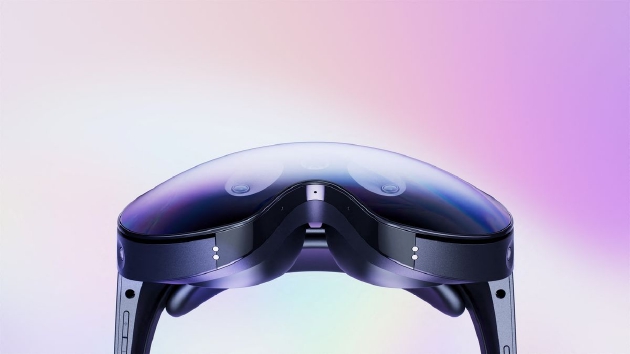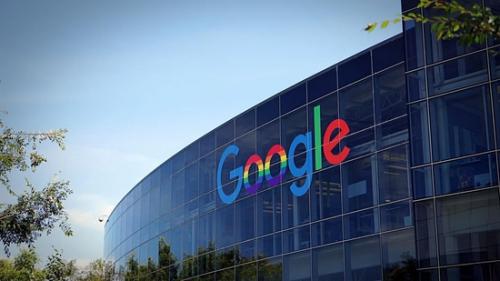your current location is:Home > Finance > depthHomedepth
Five years ago, Amazon bought this supermarket for $13.7 billion

Five years later, how has Amazon's sky-high deal developed?
In the last week of August 2017, the US e-commerce and cloud computing giant Amazon officially completed the acquisition of Whole Foods, bringing the US high-end organic fresh supermarket chain into its own e-commerce empire. This is the largest acquisition in Amazon's history and the most important step Amazon has ever taken to expand its offline business.

On June 16, 2017, Amazon suddenly announced that it would spend $13.7 billion to acquire Whole Foods, a high-end organic supermarket chain in the United States (which also has operations in Canada and the United Kingdom) at a price of $42 per share; Whole Foods will be an independent subsidiary of Amazon operation. The sky-high offline acquisitions of e-commerce giants have not only sparked a lot of speculation, but will also have a profound impact on the U.S. antitrust regulatory system in the future.
In fact, the deal was not Bezos's original intention, but John Mackey, the co-founder and CEO of Whole Foods, took the initiative to contact Bezos through an intermediary to sell it. Bezos asked the negotiating parties to keep this strictly confidential, and threatened to cancel the acquisition directly once the news leaked; the two sides named it "Project Athena" during the negotiation process. As a result, the deal came as a surprise to many until it was officially announced by both parties.
As the world's richest man, Bezos often faces sellers coming to his door. In 2013, the Graham family of The Washington Post, the most politically influential newspaper in the United States, reached out to Bezos to sell The Washington Post Company for $250 million. The acquisition of one of the three major mainstream media in the United States by the richest man in the United States can not help but make many people doubt Bezos' ambitions. Due to the political turmoil brought by the "Washington Post", the deal caused a lot of trouble for Bezos, and even had a direct relationship with his subsequent affair scandal and divorce and separation of properties, and made him and Amazon become former US President Trump. Pu's eyesore.
High-end supermarkets take the initiative to sell
So why is Whole Foods, based in Austin, Texas, taking the initiative to sell itself on Amazon? Because McGee and Whole Foods were at a difficult time: Not only was the business facing intense market competition, but it was also under pressure from the boardroom of active investors. Therefore, Markey sees selling to Amazon as the best solution.
Although the 40-year-old Whole Foods Market first launched the brand of high-end organic fresh food supermarkets, as the market size of organic fresh food continues to grow, more and more big competitors have begun to enter this high-end market segment. These big rivals are more powerful and can offer more attractive prices and a broader store network than Whole Foods.
The business pressures facing Whole Foods are real. Whole Foods' same-store sales fell 2.5% in the year before Amazon's acquisition; in the quarter Markey reached out to Bezos for a sale, Whole Foods' same-store sales fell 1.5%, the sixth consecutive year. Revenue fell for the quarter. In the first quarter of 2017, Whole Foods announced the closure of nine stores and lowered its global revenue forecast amid declining performance.
With the performance of the stock price both sluggish, activist investor Jana Partners, a hedge fund, began to pressure Whole Foods' board of directors for a strategic adjustment and for Markey to step down. It is against this background that Markey took the initiative to find Bezos to negotiate a sale, hoping that the e-commerce giant Amazon can reverse the gradually declining business of Whole Foods Market and keep his position on the board of directors.
So why did the savvy Bezos spend $13.7 billion to buy Whole Foods, whose business is under pressure. The e-commerce giant he founded, Amazon, has always been a brand of affordable prices, while Whole Foods Market is an offline fresh food supermarket known for its expensive prices. There are stark differences in the cultures of the two companies, which also cast doubt on Amazon's ability to integrate this fast offline business.

Whole Foods Market's high-priced products have caused heated discussions and ridicule on the Internet in the United States, and have been ridiculed as "IQ tax" products. A bottle of pure water with three stalks of asparagus sells for $6. According to market research firm Numerator, the most typical Whole Foods shopper is a 29-year-old young white-collar worker with an annual salary of more than $80,000. They shop in-store once every three weeks and spend an average of about $46 per purchase.
But the deal has significant value for Amazon. Whole Foods Market had more than 400 stores in the United States at that time, and because of its high prices, Whole Foods Market stores were only opened in the wealthiest cities in the United States, and its user value was also among the highest among the chain supermarkets. This is in stark contrast to Wal-Mart, which focuses on affordable and affordable prices.
With Whole Foods Market, e-commerce giant Amazon has officially extended its reach offline. With Whole Foods Market, Amazon has a complete offline service network in affluent areas of the United States. It can fully implement its own sales, delivery, returns, and services based on Whole Foods stores, opening up the “last mile” that e-commerce companies are most eager for. ".
Promoting antitrust regulatory changes
Amazon's acquisition of Whole Foods Market has also directly promoted the change in the concept of antitrust supervision in the United States. Amazon has more than half the market share of U.S. online retail sales, several times more than many of its competitors. Now the e-commerce giants have reached offline, not only shaking the offline retail industry, but also triggering discussions on antitrust regulatory standards in the United States.
According to the antitrust standard of the traditional Chicago school based on whether consumers benefit, Amazon and Whole Foods have almost no overlapping business, and Amazon will not dominate the offline fresh food market after the acquisition, but will help reduce the price of Whole Foods. Therefore, this acquisition is conducive to market competition and consumer interests, and will not pose a monopoly threat.
It is under the dominance of such regulatory standards that the Federal Trade Commission (FTC), the US antitrust regulator, did not object to the acquisition during the regulatory review period, and Amazon successfully completed the transaction two months later. By contrast, AT&T's acquisition of T-Mobile in 2011 and Nvidia's acquisition of Arm in 2020 were both aborted because of firm opposition from the FTC.

In 2017, when Amazon acquired Whole Foods Market, Lina Khan, a little-known female student at Yale University, published an antitrust paper "Amazon's Antitrust Paradox" (Amazon's Antitrust Paradox), directly challenging The antitrust philosophy that has dominated U.S. regulation for decades.
Lina Khan believes that the antitrust standards of the traditional Chicago school are no longer suitable for the current Internet platform. She analyzed Amazon's business and competition model and pointed out that although Amazon temporarily allowed consumers to enjoy low prices by lowering prices, its platform continued to strengthen its monopoly advantage, which actually reduced market competition and was not conducive to the long-term interests of consumers. She wrote an op-ed in The New York Times in which she spoke out against Amazon's acquisition of Whole Foods. She criticized the FTC's regulatory decision to approve Amazon's acquisition of Whole Foods as naive, allowing Amazon to continue to expand its monopoly power in e-commerce and logistics.
The 27-year-old Lina Khan became famous because of this paper and became a representative of the "New Brandeis School" in the antitrust field. She herself also attracted the attention of progressive left-wing politicians such as Democratic Senator Elizebeth Warren, paving the way for her later entry into politics. After Biden took office, he successively appointed hawks to positions of real antitrust power. And Lina Khan, who is only 31 years old, has won the most important nomination, serving as the chairman of the antitrust regulator FTC.
It was Lina Khan who led the FTC prosecution against Nvidia's acquisition of Arm, forcing Huang Renxun to abandon the deal that shook the chip field; Driven by the appeal of the New Brandes School of regulatory scholars, the U.S. Congress is actively revising antitrust regulatory laws to prevent technology giants from expanding their business territories through mergers and acquisitions, and to curb the growing economic and social influence of technology giants.
Stick to Organic Healthy Local
Five years have passed, how is the operation of Whole Foods Market under Amazon? When it was acquired by Amazon, Whole Foods had 400 stores, and has added 60 stores in the past five years. The total number of stores in the world has now reached 533, and the user base has reached 170 million.
Even with a global logistics giant like Amazon in the background, Whole Foods still maintains independent operations and adheres to its own localized fresh food positioning. Whole Foods has seen a 30 percent increase in local brands sold over the past five years, or more than 3,000. Even in two neighboring cities, the two Whole Foods markets sell local goods that differ.
In addition, Whole Foods has improved its food standards across the board in the past few years: It has doubled the number of unhealthy food ingredients it refuses to sell to more than 250; foods with ingredients such as hydrogenated oils, high fructose corn syrup and artificial sweeteners are Was turned away from the store. Whole Foods Market sells fish eggs and chicken to a higher standard than market regulatory standards, and the meat must be completely antibiotic and hormone-free.
Perhaps the most direct manifestation of Amazon’s acquisition is that Whole Foods Market has now become Amazon’s offline return and pickup point, and consumers can directly return products ordered on Amazon at Whole Foods Market. In addition, Whole Foods Market has also become a site for Amazon's own-brand products. Amazon Prime members can get 10% off sitewide and additional special discounts at Whole Foods.
Amazon originally had its own online fresh food business, Amazon Fresh. After the acquisition of Whole Foods Market, Amazon Fresh and Whole Foods Market did not merge, but were two completely separate businesses with their own warehousing and delivery facilities. Market research shows that Amazon Fresh and Whole Foods Market also have different user groups. Amazon Fresh's user group has a lower income than Whole Foods Market consumers and has a more diverse population.
Amazon explores new technology
When announcing the sale, McKee had said that the partnership with Amazon would bring more technological innovation. Indeed, in the past five years, Amazon has continuously introduced its own new technology to Whole Foods Market, hoping that this supermarket chain, which focuses on organic fresh food, will also be more cool in terms of consumer experience.
Over the past few years, Amazon has continued to explore a more convenient and unmanned shopping experience, piloting and deploying it in brick-and-mortar stores such as Amazon Go, Amazon Fresh, and Whole Foods. As one of the most visited brick-and-mortar stores, Whole Foods plays a key role in Amazon's quest for new shopping technology.
Starting in March this year, Amazon began piloting Amazon GO cashierless payments at Whole Foods Market. Users only need to bring their smartphones, verify their Amazon accounts through the Amazon Go app, and then check out without paying. The mobile app will instantly debit the credit card linked to your Amazon account. In addition, Amazon One palmprint payment is also a cool payment technology that Amazon introduced to Whole Foods Market. After users enter their palmprints on Amazon One, they can pay directly by swiping their palms. At present, more than 20 Whole Foods supermarkets have introduced palmprint payment, and more than 60 stores will be added this year.
These new technologies will also create controversy for Amazon. At a Whole Foods Market in Washington, D.C., Amazon deployed its Just Walk Out payment technology, which allows consumers to take their products and leave without even having to self-scan. But the technology, which deploys hundreds of cameras in supermarkets to monitor consumers' every move as they select items on the shelves, has sparked protests from user privacy rights groups.
Dash Cart is also a new technology that Amazon is about to pilot at Whole Foods Market. This technology sets sensors on the shopping cart, and consumers can complete the payment and leave directly in the shopping cart with their mobile phones. Since no cameras are used to monitor consumers, Dash Cart technology is relatively less controversial, and future deployments are likely to be much smoother than Just Walk Out.

In addition, Whole Foods has made great strides in its e-commerce business. Whole Foods' online orders more than tripled in 2020 thanks to the demand for online shopping brought about by the COVID-19 pandemic. In response to delivery demand in the New York area, Whole Foods has also opened a store in New York that is closed to the public, dedicated to fulfilling online orders. Before the outbreak of the new crown epidemic, online sales accounted for only 2-3% of the $800 billion grocery market in the United States. But by 2021, that proportion has grown dramatically to 10-11%. Thanks to Amazon's delivery network, Whole Foods Markets in more than 60 cities are offering "two-hour home delivery" for Prime Now members.
The road to offline expansion is frustrated
While acquiring Whole Foods, Amazon is actively exploring its own brick-and-mortar business. In the past few years, Amazon has opened more than 60 Amazon Fresh stores, 25 Amazon Go stores, and one Amazon Style clothing store. Adding in the previous brick-and-mortar bookstores, 4-star review stores, and store-in-shops, Amazon has more than 150 brick-and-mortar stores (excluding Whole Foods stores).
However, Amazon's offline business development does not appear to be entirely satisfactory. In March, Amazon’s first-quarter results reported its first loss in seven years, and the president of Amazon’s retail business quietly resigned. Amazon then announced the closure of all 68 brick-and-mortar bookstores, 4-star review stores, and store-in-shops. But other types of offline stores will continue to operate.
As Amazon's most important offline business, Whole Foods doesn't seem to have significantly improved its performance. According to a Placer.ai traffic survey in March, Whole Foods' traffic is now at the same level as it was before the sale in 2017. This month, Whole Foods announced the closure of six underperforming stores for the first time since the 2017 sale.
Whole Foods now has a market share of just 1 percent of U.S. food sales, according to market research firm Numerator, and e-commerce giant Amazon’s share of just over 2 percent of U.S. food sales is added to its online presence. By comparison, retail giant Walmart has 19 percent of the U.S. market and Kroger's has 9 percent. However, Walmart has more than 2,800 stores in the United States.
Like the domestic e-commerce giant Alibaba and many department stores, Amazon also has the dream of "new retail", trying to organically combine its dominant online business with offline physical stores through mergers and acquisitions, and realize online sales through new technologies. The integrated shopping experience of online and offline. The $13.7 billion acquisition of Whole Foods Market is the most critical step in Amazon’s offline shopping exploration.
Five years on, Whole Foods looks unchanged, but Amazon's new technology is everywhere. It is worth mentioning that in September this year, the 42-year-old Whole Foods Market will welcome its second CEO. Co-founder McKee, 69, will step down as CEO at that time, handing over the management of the company to COO Jason Buechel, who is only 37 years old. Perhaps under Butcher's leadership, Whole Foods will be more aggressive in deploying Amazon's new technology.
Previous:Zuckerberg paints a tech blueprint for Americans
Next:Musk and Twitter "break up", what is the price of "not love"?
related articles
Article Comments (0)
- This article has not received comments yet, hurry up and grab the first frame~













